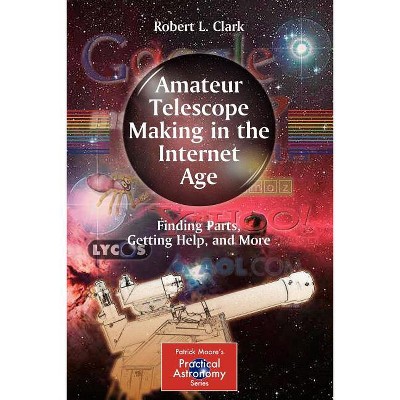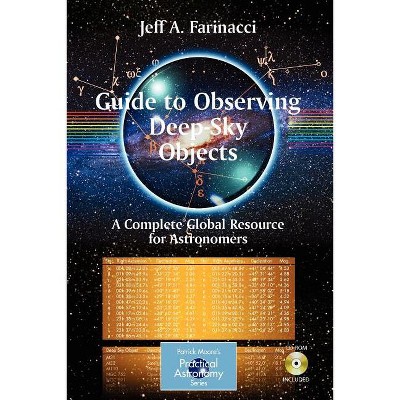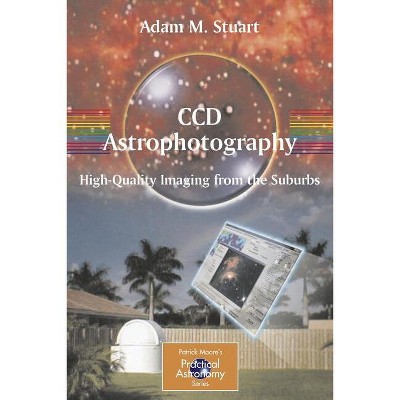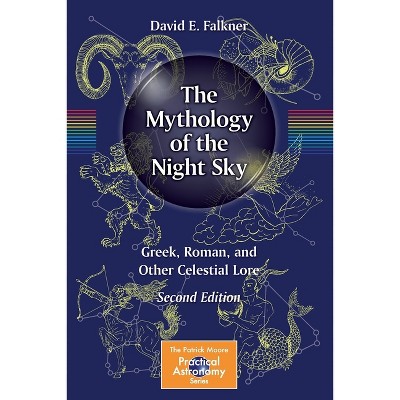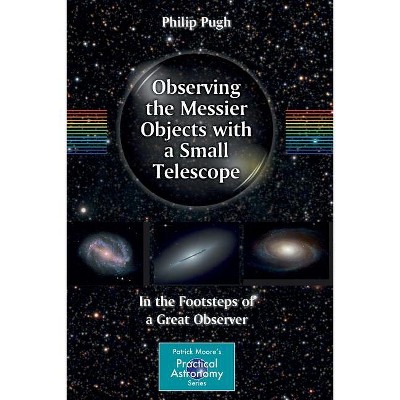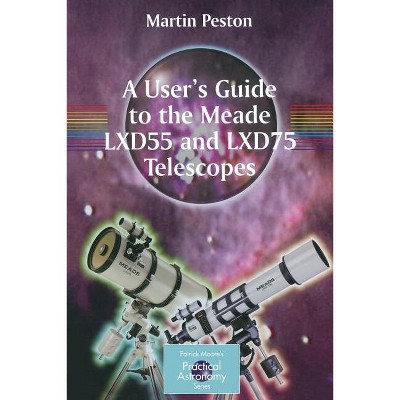The Amateur Astronomer's Guide to the Deep-Sky Catalogs - (Patrick Moore Practical Astronomy) by Jerry D Cavin (Paperback)

About this item
Highlights
- Every amateur astronomer has at least heard of the many different catalogs of deep-sky objects; the most well known are the Messier, the Caldwell, the Herschel, and the NGC.
- About the Author: Jerry Cavin first turned to amateur astronomy while growing up under the dark skies of Iowa.
- 380 Pages
- Science, Astronomy
- Series Name: Patrick Moore Practical Astronomy
Description
About the Book
The Amateur Astronomer's Guide to the Deep-sky Catalogs provides a compilation of the historical and modern astronomical deep-sky catalogs. It provides a comparison, discusses their origins, explains how to interpret the data they contain, and outlines how to create suitable 'custom' catalogs.
Book Synopsis
Every amateur astronomer has at least heard of the many different catalogs of deep-sky objects; the most well known are the Messier, the Caldwell, the Herschel, and the NGC. All of these catalogs are, in general, readily available, but very few amateur observers are in a position to choose the best catalog for their particular deep-sky observing program, know how to use the catalog, or even realize just how many there are out there!
The Amateur Astronomer's Guide to the Deep-sky Catalogs is a single compilation of the historical and modern astronomical deep-sky catalogs. It discusses their origins, compares what's in them, explains how to interpret the data they contain, and even outlines how readers can create suitable 'custom' catalogs for their own use. The last section provides a set of three deep-sky catalogs created by the author, for observers of different levels of experience, from newcomer to expert.
From the Back Cover
All of us familiar with astronomy know of Charles Messier and his early work on creating a catalog of celestial objects. Did you know that Messier was compiling a list of objects to avoid when searching the skies? He was a comet hunter, and he wanted to not mistake other things for comets.
Other lists and catalogs followed this, and many, including Messier's, have become popular with amateur astronomers who see it as a challenge to find everything on the list or as a guide on what to see when they look through their telescopes or binoculars.
In this "catalog of catalogs," the author introduces the figures behind the most famous of the star catalogs and includes the catalog listings as well. Thus here, all in one book, is your complete guide to the heavenly bodies - including constellations, galaxies, nebulae, supernova remnants, and much more - that most people seek to see when they observe the night sky. Here are enough challenges for a lifetime of exciting viewing!
Review Quotes
From the reviews:
"The book provides complete listings of the important deep sky catalogs considered useful for amateur astronomy. ... The catalog listings will make an excellent resource for amateur astronomers giving co-ordinate locations and other information on thousands of galaxies, stars, and nebula. The all to brief bio's provide a delicious taster into the lives of some fascinating characters and will act as a prompt for more in depth research. A thoroughly recommended book for all amateur astronomers." (Paul Rumsby, Best Astronomy Books, October, 2012)About the Author
Jerry Cavin first turned to amateur astronomy while growing up under the dark skies of Iowa. After leaving the farm, he completed a BS in Computer Science with a minor in Electrical Engineering at the University of Nebraska at Omaha. He worked for 10 years as the Lead Software Engineer at the Control Data Corporation specializing in real time control systems. After getting married he moved to Austin, Texas and spent over 15 years at the University of Texas at Austin working as a Research Scientist Associate on electronic warfare systems.
He is currently working as a Systems Engineer at Overwatch System and will be completing his second MSc degree in Astronomy at the Swinburne Astronomy Online, via the Centre for Astrophysics and Supercomputing in Melbourne, Australia.
Shipping details
Return details
Trending Poetry






